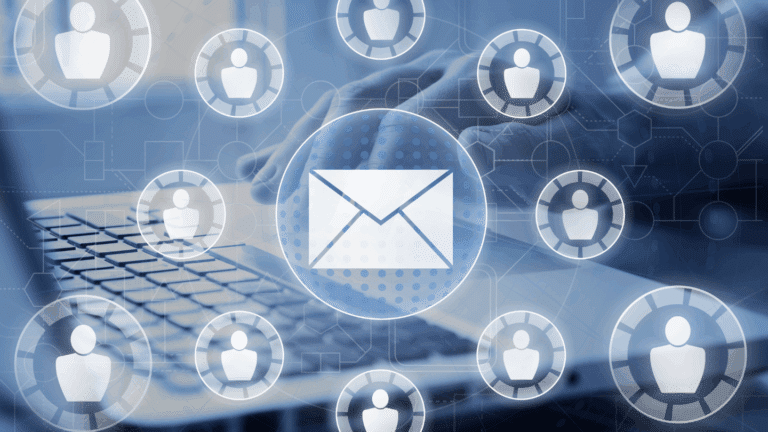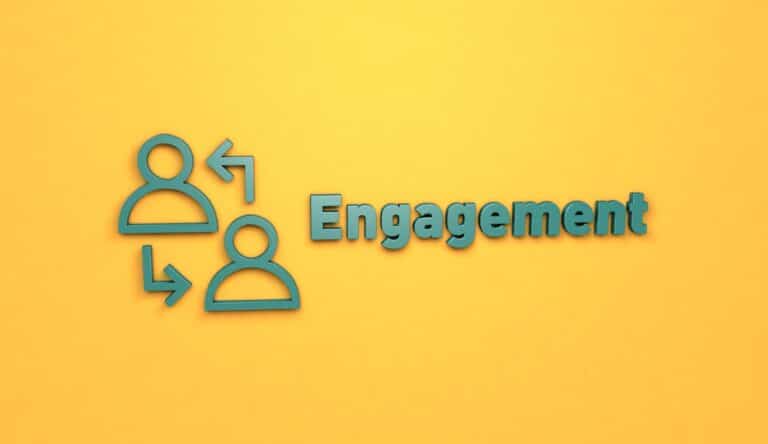Introduction

Understanding the Role of Email in Your Marketing Ecosystem

Before diving into the tactical elements, it’s important to understand where email fits within your overall marketing ecosystem. Email is not meant to exist in isolation. Instead, it serves as a connective thread that weaves through the entire customer journey. Whether you’re generating leads, nurturing prospects, converting buyers, or retaining loyal customers, email is an essential channel to reinforce your brand’s voice, share valuable content, and provide timely information. The versatility of email allows it to serve a variety of goals—brand awareness, sales, customer support, feedback collection, and community building. But its effectiveness hinges on strategy. Sending random or irrelevant emails can do more harm than good, eroding trust and increasing unsubscribe rates.
Defining Clear Objectives and Goals

Every successful email marketing campaign begins with clear objectives. Are you looking to drive more traffic to your website? Do you want to increase product sales, retain more customers, reduce churn, or simply stay top-of-mind? Your goal will determine the type of email campaigns you create and the metrics you prioritise. For instance, a campaign designed to increase conversions will likely focus on click-through and purchase rates, while a campaign aimed at customer engagement may focus more on open rates and time spent on content. Without clearly defined goals, it becomes nearly impossible to measure success or identify opportunities for improvement. Furthermore, establishing goals helps align your email marketing strategy with your broader business and marketing objectives, ensuring that email serves a strategic purpose rather than functioning as an afterthought.
Building and Growing Your Email List

Your email list is the foundation of your strategy. Building it organically and ethically is crucial for long-term success. Purchased or scraped lists not only result in low engagement but also risk damaging your sender reputation and violating data protection regulations. Instead, focus on creating value-driven reasons for users to subscribe. This could be through offering downloadable resources, exclusive content, early access to products, special discounts, or informative newsletters. The opt-in process should be transparent, stating what kind of content subscribers can expect and how frequently they’ll receive it. Additionally, implementing a double opt-in process helps ensure that the people on your list are genuinely interested and engaged, reducing bounce rates and increasing deliverability.
Once your list starts growing, it’s vital to maintain its health. Regularly cleaning your list by removing inactive subscribers or invalid email addresses helps improve engagement rates and maintain a positive sender score. More importantly, it ensures that your content reaches the people most likely to find it relevant and useful.
Segmentation and Personalisation: Speaking Directly to Your Audience

One of the greatest strengths of email marketing lies in its ability to deliver highly personalised communication. A one-size-fits-all approach rarely performs well in email. Segmentation is the practice of dividing your email list into smaller groups based on shared characteristics—such as demographics, location, purchase behaviour, or engagement history. By tailoring your message to specific segments, you increase its relevance, and therefore, its impact.
Personalisation goes beyond using the recipient’s first name. True personalisation involves understanding where the user is in their customer journey and what kind of content they are most likely to respond to. For example, a welcome email for a new subscriber should look different from a re-engagement email targeting someone who hasn’t interacted with your brand in months. When done right, segmentation and personalisation dramatically improve open rates, click-through rates, and customer satisfaction.
Crafting Compelling Content: Subject Lines, Body Copy, and Calls to Action

The success of your email often depends on your ability to capture attention within a few seconds. It starts with the subject line. This small string of text can determine whether your email is opened or ignored. A good subject line is clear, concise, and aligned with the content inside. It should spark curiosity, urgency, or offer value without resorting to clickbait. Testing different styles—questions, numbers, personalisation, humour—can help you determine what resonates best with your audience.
Once the email is opened, the body copy must deliver on the promise of the subject line. Clarity and brevity are key. Most people scan emails rather than read them word-for-word, so structure your content in a way that highlights the most important information first. Use headers, short paragraphs, and bold text to guide the reader’s eye. The tone of voice should be consistent with your brand and adapted to your audience. Whether you’re writing a product update, storytelling email, or a promotional blast, the message should always add value to the recipient.
Every email should end with a clear call to action (CTA). Whether it’s to click a link, make a purchase, read a blog post, or reply to the email, your CTA tells the reader what to do next. Make sure it stands out visually and that the language is action-oriented. “Download your guide,” “Get 20% off,” or “Join the webinar now” are far more effective than generic phrases like “Click here.”
Designing for Readability and Engagement

Visual design plays a significant role in email marketing. While your words carry the message, your design ensures that message is delivered in a digestible and engaging way. The layout should be clean, mobile-responsive, and consistent with your brand’s visual identity. Use whitespace to your advantage, break up text with images or GIFs, and ensure your CTAs are visually distinct.
A growing percentage of emails are read on mobile devices, so designing with mobile-first principles is essential. This means larger fonts, easily tappable buttons, and layouts that adapt well to different screen sizes. Accessibility is another key consideration. Use descriptive alt text for images, avoid colour combinations that are difficult to read, and ensure your email can be understood even if the images fail to load.
Automating the Customer Journey

Email automation allows you to deliver the right message at the right time without manual intervention. Automated sequences can be triggered by user behaviour, time-based schedules, or specific events. Examples include welcome series for new subscribers, abandoned cart reminders, post-purchase follow-ups, birthday emails, or re-engagement campaigns.
These workflows help nurture relationships, maintain engagement, and convert leads into customers by providing relevant content exactly when the user needs it. A well-planned automation strategy ensures consistency in communication, saves time, and enhances the overall user experience. However, automation should never feel robotic. Personal touches, thoughtful messaging, and well-timed triggers are essential to making automated emails feel human and relevant.
Testing, Measuring, and Optimising for Better Results

No matter how carefully you plan your strategy, there’s always room for improvement. That’s where testing and data analysis come into play. A/B testing allows you to compare different versions of an email to see which performs better. You can test subject lines, sender names, CTA buttons, layout, imagery, and even send times. The key is to test one element at a time so you can isolate what’s making the difference.
Once your emails are sent, it’s crucial to monitor key performance metrics. Open rates indicate how compelling your subject line and sender name are. Click-through rates show how effective your content and CTAs are. Conversion rates reveal whether your email led to the desired action. Unsubscribe and bounce rates can highlight issues with content relevance or list quality. Analysing these metrics helps you identify what’s working and where adjustments are needed.
Beyond the numbers, consider qualitative feedback as well. Invite your subscribers to share their opinions, preferences, or challenges. Understanding your audience’s mindset allows you to evolve your strategy in more meaningful ways.
Maintaining Compliance and Building Trust

In the era of data privacy and strict regulations like GDPR and CAN-SPAM, compliance is not optional—it’s fundamental. Your subscribers must give informed consent to receive your emails. Provide clear information about how their data will be used and offer easy options to unsubscribe or update preferences. Including a physical address in your footer, using accurate sender information, and honouring unsubscribe requests promptly are not just legal requirements but also best practices that foster trust.
Transparency and respect are cornerstones of effective email marketing. When subscribers feel that their data is safe and that your communication is respectful, they are more likely to engage and stay loyal over time.
Evolving with Trends: Interactive Emails, AI, and Personalised Experiences

Email marketing is continually evolving. Today’s most successful campaigns incorporate emerging trends like interactivity, AI-driven personalisation, and data-rich dynamic content. Interactive elements—such as embedded polls, carousels, and real-time countdowns—enhance engagement and keep subscribers involved. Meanwhile, machine learning can help predict user behaviour, recommend products, or trigger dynamic content based on past interactions.
Personalisation at scale is becoming more achievable, allowing brands to create unique experiences for each subscriber. From using predictive analytics to sending highly targeted offers, to leveraging behavioural data to shape email journeys, the future of email marketing lies in increasingly customised and intuitive communication.
Conclusion

Creating an effective email marketing strategy is both an art and a science. It demands a deep understanding of your audience, a commitment to delivering value, and a willingness to iterate based on real-world feedback. From building a clean list and segmenting it smartly to crafting compelling content, leveraging automation, and staying compliant with privacy laws, each step in the process contributes to building trust and fostering long-term relationships.
In a digital landscape filled with noise and distractions, email provides a rare opportunity to speak directly to your audience. When used thoughtfully and strategically, it becomes more than just a marketing tool—it becomes a channel for meaningful connection, measurable impact, and sustainable growth. As consumer expectations evolve and technologies advance, staying adaptable, creative, and data-informed will ensure your email marketing strategy re






















